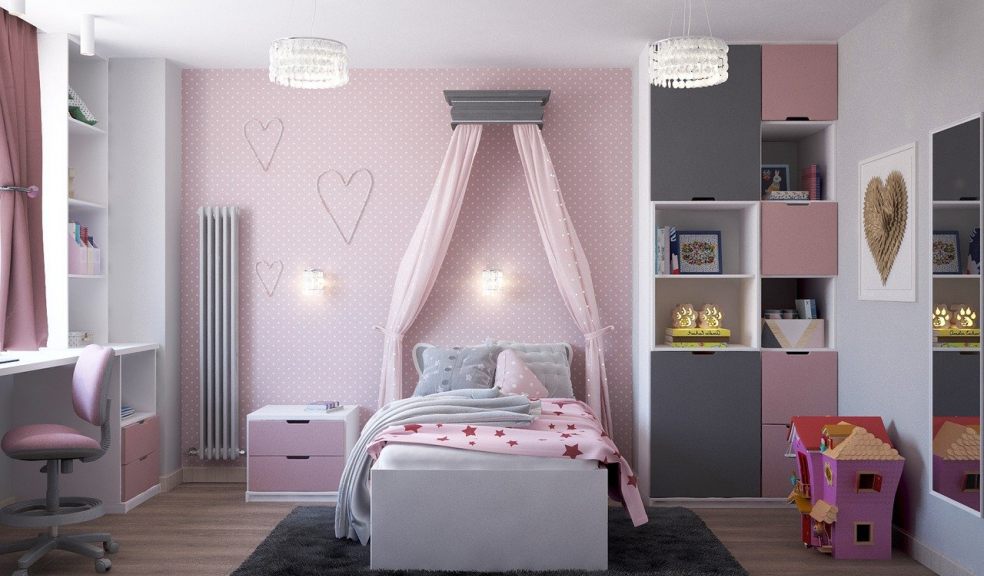
Nine cheap and easy hacks to ensure your child's bedroom changes with them
Children are notoriously fickle, and if they love something today, chances are they won't be nearly as keen on it tomorrow.
And while toys, clothes and other possessions can be easily replaced (if you've got the money), the same can't be said for decor and furniture. So, that means the lovely child's bedroom you spent countless hours and huge expense decorating and furnishing, could be out of favour before your paintbrushes are dry.
To avoid wasting time and money, savvy parents need to 'futureproof' their child's room, so it grows with them and can be easily adapted to their ever-changing tastes, as well as being more environmentally-friendly.
Here, interiors experts give their tips on what parents can do to ensure children's rooms stand the test of time and taste, and aren't too much of a burden on the environment...
1. Plan for longevity
Planning early is key, explains Georgina Fitzherbert, an interior designer at children's plastic-free products shop PomPom (shoppompom.com), who advises forward-thinking new parents to steer clear of furniture like changing tables.
"When planning a children's bedroom, endeavour to look at the longevity of designs, so they're readily adaptable and grow with children's differing needs," she says. "In terms of adaptable furniture, changing tables have zero use after a certain point in a child's life. What's wrong with putting the mat on a chest of drawers? Ugly plastic toy boxes can be replaced with statement raffia chests, and wooden furniture can look great when restyled or repainted. It's about planning early!"
2. Spend more on adaptable furniture
"It may be tempting to opt for cheaper furniture, but this is often a false economy, as you'll end up replacing items after only a few years," warns Nathalie Davis, head product designer at children's bed retailer Cuckooland (cuckooland.com). "Investing in a bed, for example, that can be adapted as your child grows, is a good option – the initial cost is more expensive, but if you gradually write off that cost over the lifespan of the bed, you'll definitely get more value for money, and because you're being far less wasteful, you're playing your part in protecting the environment.
"Tools like conversion kits are widely available, which can facilitate things like a cot changing into a low loft bed, giving a completely new look to the bed and opening up the space below for play, as children grow. In buying bedroom furniture to stand the test of time and taste, think quality for longevity and to avoid false economy, sustainability for the environment, and adaptability to avoid waste and to save money in the long run."
3. Opt for neutral decor, with removable splashes of colour
Lead interior designer and director David Ewart, from designer furniture company Pavilion Broadway (pavilionbroadway.co.uk), highlights the huge differences in functions of the bedroom as children grow.
"One of the key transitions in early years is from the nursery into the toddler room, with two starkly different functions," he says. "Considering your paint colour carefully is important. Traditional blue and pink rooms date very quickly, as do overly-juvenile print wallpapers. Go neutral and accessorise with bold accents. Easily removable wall decals [transfers] are my top tip for adding pops of colour on top, without restricting yourself to a full decorative overhaul in a few years' time."
4. No wacky wardrobes
"Choosing practical storage solutions, rather than themed or overly-decorative nursery cabinets, is a sobering but ultimately future-proofed choice," advises Ewart.
Choosing practical storage solutions, such as captains beds for kids with built-in drawers and shelves, instead of themed or overly-decorative nursery cabinets, is a wise decision for long-term usability. By opting for functional storage options, you ensure that the furniture will adapt as your child grows, providing ample space to store toys, books, and essentials without compromising on style or cluttering the room with unnecessary decorations.
5. Be cautious with carpeting
Choosing a more fun rug over a neutral carpet, rather than carpeting the entire room in a wild print, means you can simply change rugs at a later date, at a much lower cost than re-carpeting the whole room, adds Ewart.
6. Think simple but sustainable
Sarah Davies, interior designer at Floella Interiors (floella.uk), revamped her daughter's room with some very simple changes when she turned eight.
"My daughter decided she hated her childish bedroom and wanted something more sophisticated like her teenage sister," she says. "I decided the new room design was a perfect place to teach my daughter that we could transform her room into something she wanted and loved, but without it costing the earth.
"We removed the old dressing table and swapped it for one from another room, painting it the new key colour for her scheme. We chose a coral pink, as it worked with other things we were using in the room, but was a more grown-up pink than she'd had before. The only other thing I bought, along with the coral paint, was the flowers that I attached to a pole to create a pelmet effect. The flowers can easily be removed when she's tired of them and added to a vase to be used elsewhere. All her childhood books were kept but displayed the wrong way around to fit the scheme better too."
7. Use colours that work throughout the home
"My ethos in my home is to follow a colour style, which means I'm able to move items around into different rooms and they all work," says Davies. "This way, you can refresh any room in your home without spending a fortune. My daughter's room refresh cost £40 – everything else was things we already owned."
8. Use colourful accessories
A well thought-out colour scheme is important for easily updating a child's room, stresses Katie Myers of upcycled home interior products company Sarru Home (sarruhome.co.uk).
"Choose the standard necessity items in neutral colours, so you can always work the room around them," she advises. "Adapt the style of the room as they get older through smaller pieces, such as pictures, rugs, plants, blankets and cushions, as items like this are easier to change around. A little goes a long way, and bedroom accessories or decorations in your child's favourite colour – or in a design they like – will prevent you from ever having to completely refurnish a room."
9. Upcycle furniture
Think about upcycling and/or repainting bedroom furniture if your child's taste has changed a lot, suggests Myers. "For example, work on turning their smaller bed into a couch for their room if they outgrow it," she suggests.













